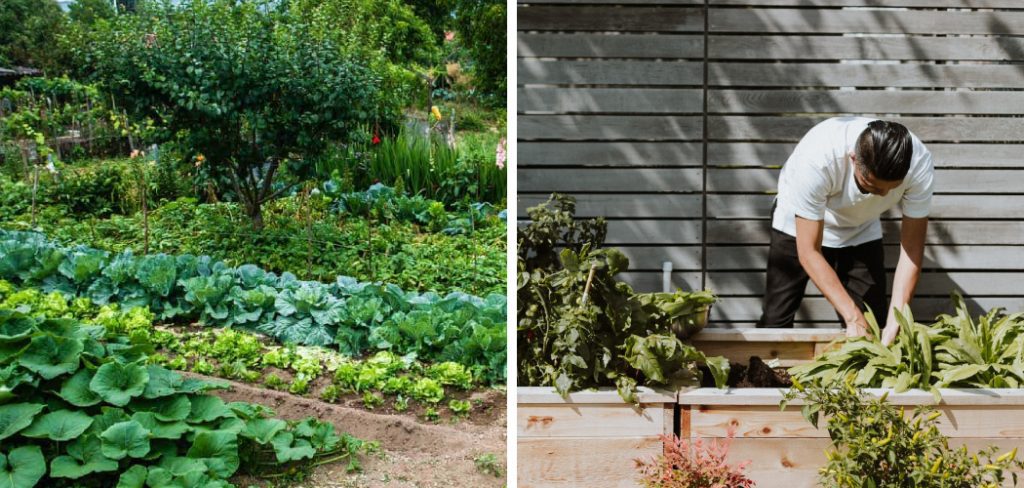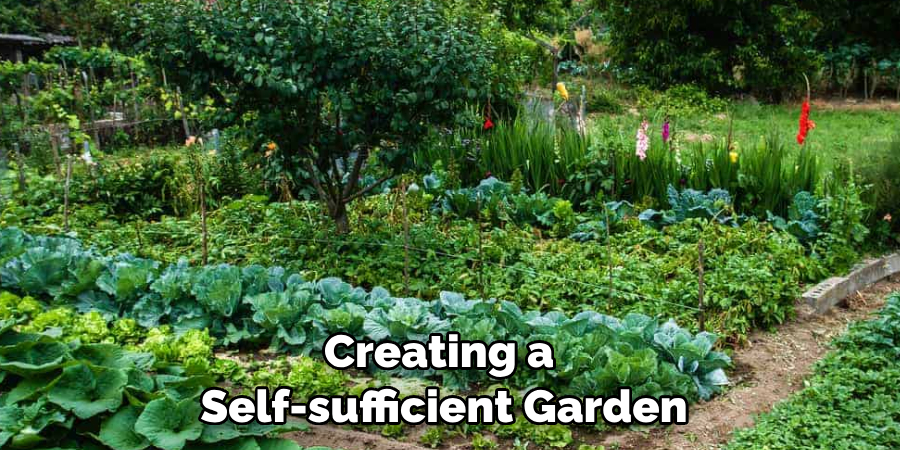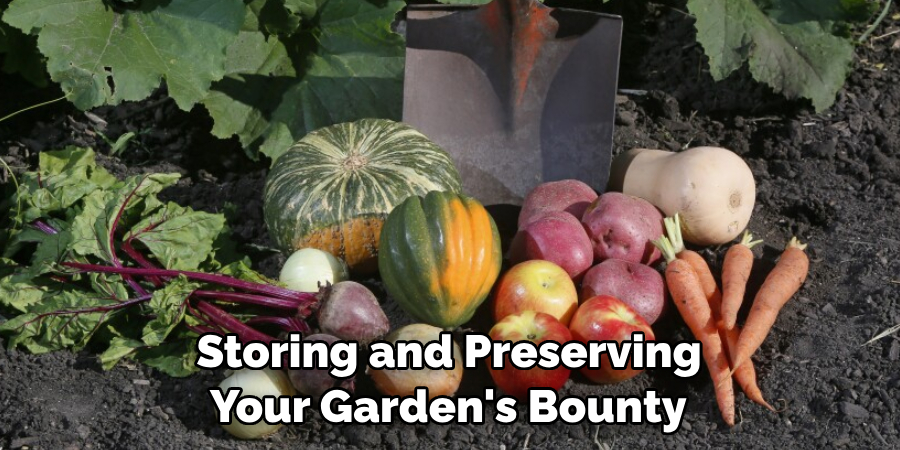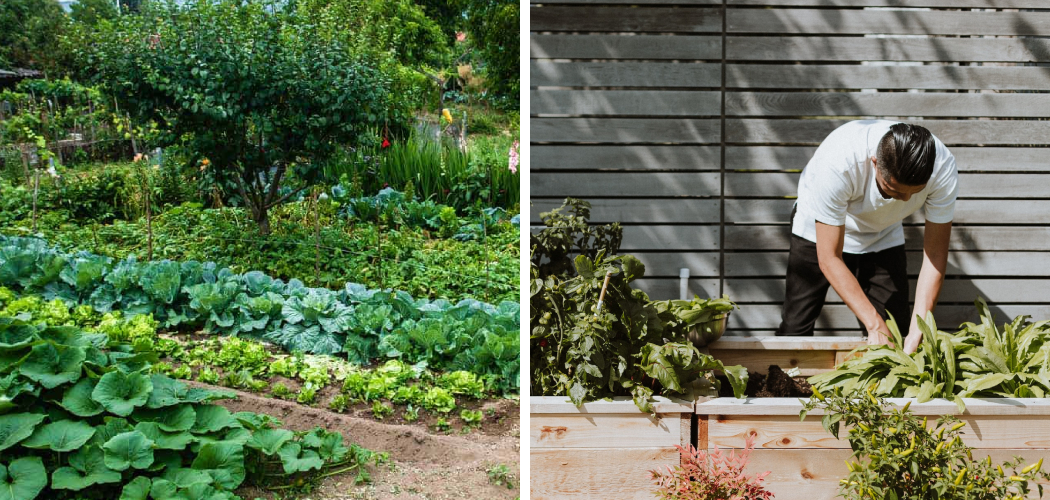To make a self-sufficient garden, prioritize strategic planning of planting, maximizing space, and employing sustainable practices. Creating a garden that is self-sufficient involves careful planning and implementation of sustainable techniques.
By strategically selecting plants, optimizing space, and adopting eco-friendly practices, you can ensure that your garden thrives without much dependence on external resources. Whether you have a small urban garden or a large backyard, self-sufficiency is achievable. Not only does a self-sufficient garden provide you with fresh produce and herbs, but it also promotes biodiversity, reduces food waste, and benefits the environment.
In this article, we will explore various steps and aspects to consider when creating a self-sufficient garden, enabling you to cultivate a productive and sustainable oasis.

Building A Garden That Provides For You
Building a garden that provides for you involves choosing the right plants for a self-sufficient garden to maximize space with vertical gardening techniques and understand the importance of companion planting. To create a self-sufficient garden, it’s essential to select plants that will efficiently meet your needs and grow well in your climate.
Vertical gardening techniques such as using trellises, hanging baskets, or vertical planters help optimize space, allowing you to grow more in small areas. Companion planting is another crucial aspect of a self-sufficient garden. By planting complementary crops together, you can enhance growth, deter pests, and increase overall productivity.
Pairing plants that benefit each other, like tomatoes and basil, creates a symbiotic relationship that ensures a thriving garden. So, whether you have a large backyard or a tiny balcony, follow these methods to cultivate a self-sufficient garden that provides abundant harvests.
Growing Your Own Food Sustainably
A self-sufficient garden can be achieved by utilizing organic gardening methods, implementing a rainwater harvesting system, and using natural pest control methods. By adopting organic gardening techniques, you can ensure that your food is grown sustainably without the use of harmful chemicals.
This not only benefits your health but also helps to protect the environment. Implementing a rainwater harvesting system allows you to collect and store rainwater, reducing your reliance on traditional water sources. This is not only cost-effective but also helps to conserve water.
Additionally, using natural pest control methods such as companion planting and biological controls, can help to maintain a healthy balance in your garden ecosystem and minimize the need for harmful pesticides. By following these practices, you can create a self-sufficient garden that provides you with fresh and nutritious food while being environmentally friendly.
How to Make a Self Sufficient Garden: Step by Step Guide
Creating A Sustainable Routine For Your Garden
Creating a sustainable routine for your garden involves developing a composting system to nourish the soil. By recycling organic waste, you can enrich the soil’s nutrients naturally. Another essential aspect is managing water usage through drip irrigation, which reduces wastage and promotes water conservation.
Additionally, understanding the importance of crop rotation helps maintain soil fertility and prevents the buildup of pests and diseases. By alternating crops each season, you can effectively manage soil health and yield better harvests. Emphasizing self-sufficiency in your garden ensures a more sustainable and environmentally friendly approach to gardening.
Planning And Layout
Assess the available space for your garden by considering its size and layout. Think about creating a master plan to maximize productivity. Take into account factors such as sunlight exposure and access to water sources. Design pathways and beds strategically to optimize efficiency.
Keep in mind the convenience of maintenance and harvesting. By planning and laying out your garden thoughtfully, you can create a self-sufficient oasis.
Soil Preparation And Nutrient Management
Soil preparation and nutrient management play a crucial role in creating a self-sufficient garden. The first step is soil testing to determine its nutrient content and ph levels. Based on the results, amendments can be made to improve the soil’s fertility.

Organic fertilizers, enriched with natural nutrients, are ideal for promoting healthy plant growth. These fertilizers provide a slow release of nutrients, preventing over-fertilization and reducing the risk of damaging the soil and surrounding environment. Maintaining a nutrient balance is essential for the overall health of your garden.
Regularly monitoring the nutrient levels and adjusting as needed ensures that your plants receive the proper nourishment. With careful soil preparation and nutrient management, you can create a self-sufficient garden that thrives and delights you with a bountiful harvest.
Implementing Sustainable Garden Structures
Implement sustainable garden structures to create a self-sufficient garden. Start by building raised beds for efficient gardening. Construct a greenhouse for year-round production. Utilize trellises and arbors for vertical gardening. These structures allow you to maximize space and grow a variety of crops.
By implementing sustainable practices, such as composting and rainwater harvesting, you can further enhance the self-sufficiency of your garden. This will reduce your reliance on external resources and ensure the long-term sustainability of your garden. With these strategies in place, you can enjoy a bountiful harvest while minimizing your environmental impact.
Create a garden that not only provides fresh, organic produce but also contributes to a healthier planet. Implement sustainable garden structures today and reap the rewards of a self-sufficient garden.
Establishing A Regular Maintenance Routine
Establishing a regular maintenance routine is crucial for creating a self-sufficient garden. When it comes to watering, different plant varieties require specific techniques. Proper watering ensures their optimal growth and health. Pruning and trimming strategies are essential to promote vigorous plant growth.
Regularly removing dead or diseased branches allows for better air circulation and prevents the spread of diseases. Identifying and managing common garden pests and diseases is another vital aspect of maintenance. Being vigilant and taking appropriate measures help in preserving the garden’s health and reducing crop losses.
By following these practices, your garden will thrive, and you will enjoy the fruits of your labor. Remember, a self-sufficient garden brings both satisfaction and sustainability to your life.
Harvesting And Preserving Your Produce
Knowing when to harvest different vegetables and fruits is crucial for a self-sufficient garden. By understanding the right time to pick your produce, you can ensure optimal taste and quality. Additionally, it’s essential to learn various techniques for storing and preserving your garden’s bounty.

From canning and freezing to dehydrating and fermenting, there are numerous methods to choose from. Each preserves the freshness and flavors of your fruits and vegetables in unique ways. Exploring these preservation techniques allows you to enjoy your homegrown produce throughout the year.
So, whether you’re planning to make homemade jams, sauces, or pickles, take the time to understand the best time to harvest and experiment with different preservation methods. Your self-sufficient garden will continue to provide you with delightfully fresh and nutritious food long after the growing season.
Frequently Asked Questions For How To Make A Self Sufficient Garden
Can I Create A Self-Sufficient Garden In A Small Space?
Yes, you can create a self-sufficient garden even in a small space by using vertical gardening techniques like trellises, hanging baskets, and wall-mounted planters. Make use of every inch of available space to grow a variety of plants.
What Types Of Plants Are Best For A Self-Sufficient Garden?
Choose plants that are low-maintenance and provide high yields, such as tomatoes, cucumbers, peppers, lettuce, and herbs. Consider perennial vegetables like asparagus and rhubarb, as they require less replanting and provide continuous harvest for years.
How Can I Reduce Water Usage In My Self-Sufficient Garden?
To reduce water usage, implement efficient watering techniques like drip irrigation, mulching, and collecting rainwater. Water your plants early in the morning or late in the evening to minimize evaporation. Use self-watering containers to ensure plants receive the right amount of water.
Do I Need To Use Synthetic Pesticides In A Self-Sufficient Garden?
No, you can avoid using synthetic pesticides by practicing organic gardening methods. Introduce beneficial insects like ladybugs and lacewings to control pests naturally. Companion planting and crop rotation can also help reduce the need for chemical pesticides.
How Do I Maintain Soil Fertility In A Self-Sufficient Garden?
Maintain soil fertility by using organic compost and natural fertilizers like compost tea. Rotate your crops to prevent nutrient depletion. Consider planting cover crops like clover or legumes, which help fix nitrogen in the soil and improve its fertility.
Can I Grow Fruit Trees In A Self-Sufficient Garden?
Yes, fruit trees are a great addition to a self-sufficient garden. Choose dwarf or semi-dwarf varieties for limited space. Select fruit trees that are suitable for your climate and provide a variety of fruits throughout the growing season. Prune them properly to maintain their health and productivity.
Conclusion
The key to a self-sufficient garden lies in the combination of smart planning, sustainable practices, and a deep connection to the land. By implementing the strategies we’ve discussed in this blog post, you can create a garden that not only provides for your needs but also respects and nurtures the natural world around you.
Incorporating permaculture principles, such as companion planting and soil building techniques, will help create a harmonious ecosystem where plants and wildlife thrive together. Embracing water conservation methods, like rainwater harvesting and drip irrigation, will ensure that your garden remains resilient even in times of drought.
And finally, by embracing the concept of self-sufficiency, you’ll not only reduce your environmental footprint but also experience the joy of growing your own food and connecting with nature. So go ahead, start planning your self-sufficient garden today and reap the rewards for years to come.

